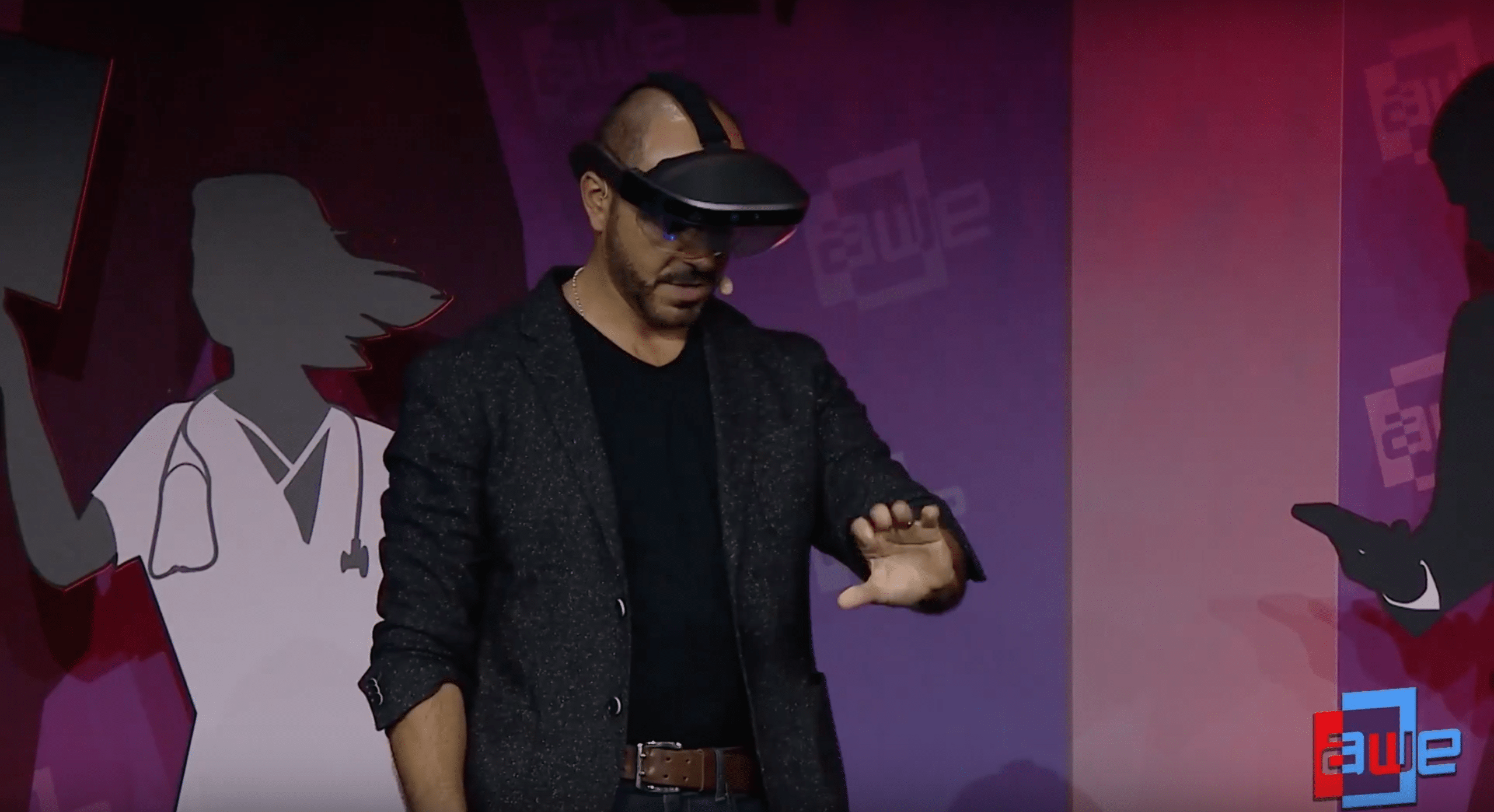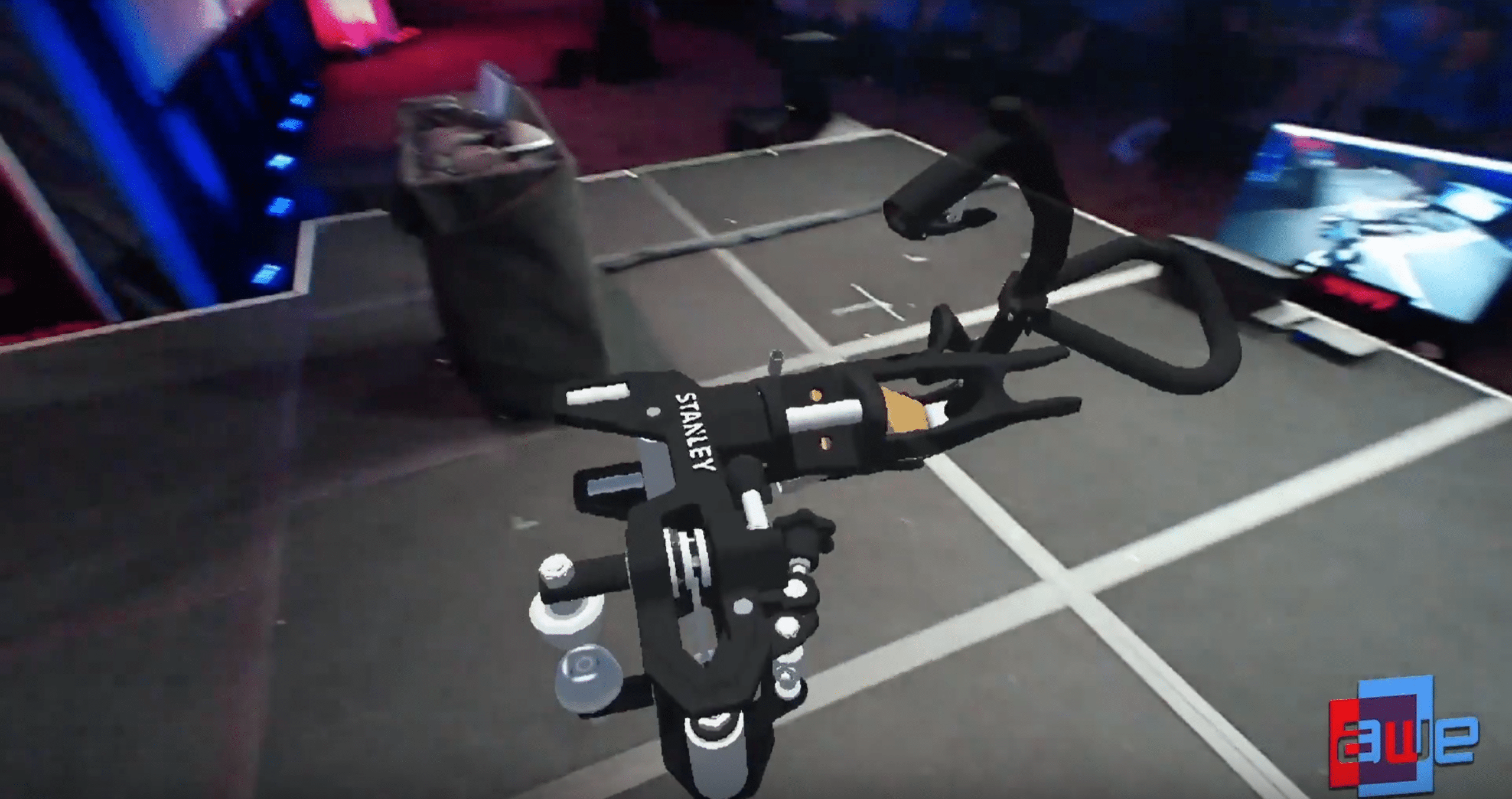
XR Talks is a weekly series that features the best presentations and educational videos from the XR universe. It includes embedded video, as well as narrative analysis and top takeaways. Speakers’ opinions are their own.
The transformation of storytelling is an important but arguably overplayed topic in the XR world. But it can also be argued that storytelling comprises more than its traditional definition. Story is key in everything from cinema to sales, asserted Meta CRO Joe Mikhail at AWE (video below).
Furthermore, the storytelling topic usually happens in the context of VR. But Mikhail’s broadened definition brings AR into the discussion. In that sense, there are several types of human interaction — even business and commerce scenarios — involving a story and an audience.

Taking that one step further, much technological advancement over the past few decades has involved tools to aid the transmission of such narratives. We’re talking everything from Power Point to YouTube. But these are representative media that require cognitive translation.
“They’re simply descriptive technologies,” said Mikhail. “They allow the storyteller to encode an idea, and the audience to decode it. That takes a lot of work and a lot can be lost in translation… AR is the first technology that doesn’t try to describe experiences, it actually delivers them.”
One example is Mikhail’s father who’s a retired orthopedic surgeon. His entire career involved reading two-dimensional x-rays and MRIs. Though these are important technologies, they’re limited in presenting complex visual patterns and data in 2D, and from a single point in time.
“As powerful as they are, they’re flat media that reduce a patient’s entire condition into a single image,” said Mikhail. “It takes a radiologist or a surgeon like my dad to decode it… With Meta 2, he was no longer looking at an image, he was looking at a patient and inhabited the same space.”

Stories in 3D also apply to selling complex equipment. Meta is working with Stanley Black & Decker to bring their CAD models into AR to sell complex industrial equipment like railroad repair rigs (3 times fast?). This can enhance a salesperson’s “story” that otherwise relied on 2D slides.
“This is a very expensive and large piece of equipment that’s difficult to travel with or show customers,” said Mikhail. “I can apply a one-to-one scale and enable a salesperson to take this in the field where it belongs. They expect a much higher sales conversion and lower cost of sales.”
Design and architecture are also target verticals for Meta. One of the selling points is the time saved and downstream errors avoided by using 3D models in design phases. These are expensive components that can be reduced, so Meta can tell a strong ROI story to enterprises.
“They’re able to accelerate design reviews and be much more efficient and competitive in their time to market and cost of product development,” said Mikhail. See the rest of the presentation below including a live first-person demonstration of the Meta 2 in the above use cases.
Meta Close
For deeper XR data and intelligence, join ARtillry PRO and subscribe to the free ARtillry Weekly newsletter.
Disclosure: ARtillry has no financial stake in the companies mentioned in this post, nor received payment for its production. Disclosure and ethics policy can be seen here.
